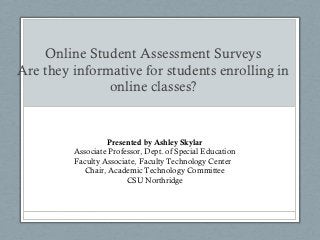
There are many different definitions for e-learning. We will be focusing on e-learning which is an online learning environment. E-learning is a personalized learning environment that uses artificial intelligence. While it is an effective way to boost your resume, e-learning is less flexible than other web-based formats. Here are some common terms associated with electronic learning.
eLearning is an internet-based learning platform.
Online learning is what the term elearning means. This is a popular way for students to learn from diverse backgrounds and locations around the globe. To facilitate this environment, higher education institutions use a learning management software. E-learning can take place synchronously or asynchronously, with synchronous learning requiring participants to be online at the same time. No matter the learning environment, the goal of e-learning is to equip learners with the knowledge and skills that they need for success.
There are many benefits to e-learning. Students are more likely to take part in lessons when they can't be restricted to one location. Students can also work on multiple tasks simultaneously in an online learning environment. Because online learning isn't confrontational, both students and teachers are less likely to feel intimidated. Additionally, they are less likely to feel ostracized when discussing course material with each other, allowing the entire class to interact freely.

It uses artificial intelligence to personalise learning
AI can provide immediate feedback to a student, as the majority of communication happens online or via text message. This is vital because students are hesitant to take risks and don't like receiving criticism in public. However, e-learning can provide students with immediate feedback based upon a number criteria. As a result, AI can be used to personalise learning by addressing these concerns.
AI allows learners to tailor learning experiences and is becoming more accessible. Today's workplaces have many learners and instructors are unable to cater for all. AI gives learners the ability to decide their own pace. AI also continuously updates itself based on previous results. It's a win-win situation for both the teacher and the learners. Learning processes can also be scaled with artificial intelligence.
It is a powerful way to boost your resume
While it is important to update your resume with updated skills, e learning is also a good way to develop new skills. There are many online courses to suit any career path. In addition, "career track" online training programs can often offer job proposals. Although these courses can be difficult to complete, the skills and knowledge you gain will be of great value to your future employers. Learn about the many ways to take advantage of e-learning for a resume boost today.
Portfolios are a great way to showcase your eLearning skills. Employers can review your work samples and references to determine if you are a good match. Your portfolio will display your unique skills. E-learning courses can be an effective way to boost your resume if you make them stand out. Your eLearning resume should be concise and free from unnecessary text. Highlight your key skills and qualifications.

It is less flexible then other web-based formats
Video modules can be learning videos that have been prepared ahead of time. Some videos can be animated, while others have a human instructor. These can be accessed any time and played as many times as necessary to grasp the concepts being taught. Text is useful for understanding material but videos are better for learning concepts. You can also see the explanations and colors, which are essential elements of eLearning.
FAQ
Is eLearning effective for learning?
E-learning is an effective tool for delivering learning content from anywhere at any time. E-learning gives learners instant access to relevant information, wherever they are located.
You can also deliver training programs online without having to travel or rent classroom space.
What are the different types e-learning is? What are their goals?
There are 3 major types of online learning:
-
Content delivery – This type of elearning is designed to give students information. You can find textbooks or lesson plans as examples.
-
Instructional design is a type of eLearning that focuses on teaching learners skills. Examples include tutorials or simulations.
-
Learning management: This type of online learning allows instructors to plan and manage student activities. Examples include virtual classrooms, discussion forums, and virtual classrooms.
How much multimedia should an eLearning class contain?
The answer depends on what you want to achieve. If you're looking for quick information delivery, then less is likely to be the best. If you're looking to deliver training that helps people do something, however, more might be better.
The most important thing is to know what your goals are for your eLearning courses. Your learners' expectations of your course are also essential. This will help you ensure you have sufficient content to meet your goals.
Let's take, for instance:
You should include many examples of text documents to help people learn how to use Microsoft Word. To teach Excel to people, you will need to show them many different types.
It is also important to decide whether you plan to use images or video to illustrate concepts.
Video is great for teaching people how to do things, but it's not as good at explaining complex topics. Video is also quite expensive to make. While images are more affordable to produce, they do not convey the same emotional impact as videos.
So, the bottom line is this - you need to think carefully about what you want to achieve before designing your eLearning course.
What are the advantages of e-learning for students and teachers?
E-learning offers both students and teachers better learning outcomes. It allows learners to access information anywhere and anytime they want. E-learning allows educators to interact with students through technology in new ways.
E-learning enables teachers to provide personalized instruction and feedback while also supporting student progress. This encourages students to be more engaged and motivated. E-learning can be used by teachers to improve communication, collaboration, critical thinking, and other skills. They can also use it to enhance teaching practice by providing opportunities for self-reflection and reflection on others' experiences.
E-learning makes it possible to cut down on training costs. To train a class on a new topic, for example, a teacher will need to spend money on books and materials. However, if the same material is available online, then there is no need to purchase these items.
What should an eLearning program look like?
Your eLearning course must be designed so that learners can interact with it.
This means the design must be simple to navigate and the content should be clear.
This also means the content has to be engaging and entertaining.
Three things are essential to ensure your eLearning course meets these requirements.
Content
First, decide what content you want in your eLearning course. You must decide how long each section should be. For example, if you want to teach someone how to write a letter, then you need to decide how much time you want to spend on each topic.
Navigation
The second decision that you must make is how you want learners to navigate through your course. Do you want them scrolling through all pages at once? Do you want them to skip to the most important parts?
Design
You must decide how you want the course to look. This includes deciding how long each screen is going to take to load and how large the font size should be. It is also important to decide whether graphics (such as photos) will be included.
After you've made these important decisions, it is time to test your plan to make sure it works.
Statistics
- Interestingly, students' participation in online training grew by 142% in the past year alone, indicating how quality education and up-to-date teaching pedagogy are preferred by learners and working professionals to upskill across India. (economictimes.indiatimes.com)
- Reliability, validity, and descriptive statistics (The Gambia). Empty CellCRAVEMeanSDACBICOEEHABHEHMPEPOPVSESITRAC0.770.635.080.842) in behavioral intention to use e-learning in The Gambia (53%) and the UK (52%), (sciencedirect.com)
- India's PC market clocks 9.2% growth to 3.4 million units in the September quarter (economictimes.indiatimes.com)
- The UK sample was relatively balanced in terms of gender (56% male) compared to the Gambian group (77% male). (sciencedirect.com)
External Links
How To
What has happened to e-learning since its initial introduction?
The first e-learning courses were developed in the 1980s. They were developed to teach adults new computer skills. E-learning has evolved significantly since then. Today, there are many options for e-learning. These include:
-
Computer-Based Training: CBT - Computer-based training is usually brief and uses computers to communicate information.
-
On-Demand (ODT), - ODT can be compared to CBT. However, the course is only available when it is necessary.
-
Self-study - Self-study allows students to study on their own, without any assistance.
-
Web-Based Training - WBT (Web-Based Training) is an eLearning option that allows students to do their learning online. The tutor cannot see what the students are doing but can track their progress through the system.
-
Video Lecture - Videos are recorded lectures and can be viewed either on a TV screen or on a computer monitor.
-
Online Tutorials - These are web pages that offer step-by-step instructions for performing certain tasks.
-
Interactive Whiteboard (Interactive Whiteboard) - An interactive whiteboard works in the same manner as a regular whiteboard but has touch-sensitive zones that allow users interact directly with the image.
-
Simulations – Simulations are computer-based games where role-playing is encouraged. Students are asked to simulate situations that might occur in their jobs.
-
Games - Computer-based games that help you solve problems.
-
Collaborative Learning – Collaborative learning encourages students to work together.
-
Problem Solving is an e-learning course that helps you develop critical thinking skills.
-
Virtual Environments are 3D representations of real-world objects. In this example, it would be the 3D model a building.
-
Social Networking- A way to communicate with others via the Internet.
-
Mobile Learning - Mobile learning is a type of eLearning that takes place while traveling.